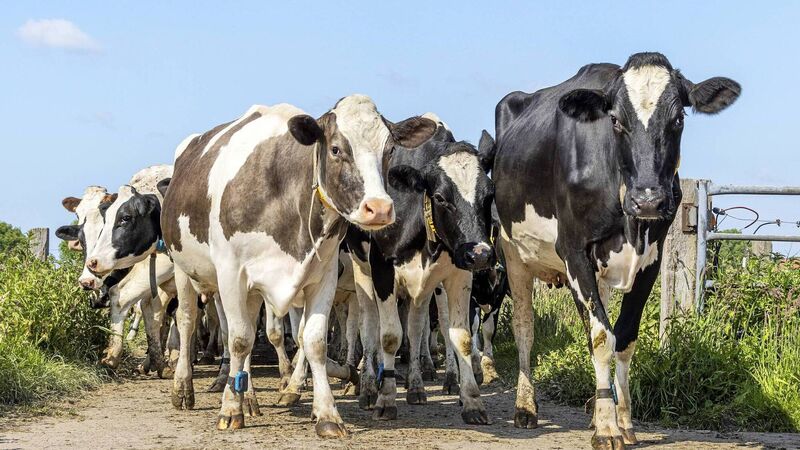Behind the closed door at the TB summit

The department's proposals have been put in five categories: wildlife, biosecurity, detection and elimination, support TB-free herds, and reduce the impact of 'high-risk' animals.
The emergency bovine TB summit called for by the minister for agriculture Martin Heydon took place last week and put forward revised proposals for additions and corrections to be made to the TB eradication programme in Ireland.
A source, who attended the summit, told the the proposals were broken down into five categories. The first is to support herds that are TB-free to remain free, the second is to reduce the impact of wildlife on the spread of TB, and thirdly, to detect and eliminate TB infection as early as possible in herds with a breakdown and avoid future breakdowns.
The fourth category surrounded support for farmers to improve areas of farm biosecurity, and the fifth category aimed to reduce the impact of known high-risk animals and the spread of TB.
For control of animals considered ‘high risk’ — animals that were in a herd during a TB outbreak but did not display a positive result for the disease, the department would employ a three-year rule.
This rule would mean for three years after a second clear TB test, a farmer would not be allowed to sell any animals within the herd that experienced the breakdown through a mart or farm-to-farm movement.
If the animal is to be sold, it would only be permitted to be sold to a factory or controlled finishing unit, which would also only be allowed to fatten and slaughter.
This condition would particularly affect farmers who may not be able to house animals to fatten and must sell immediately, losing out on receiving a better price for the animal.
Pricing for animals such as these will also be dictated by a small population of buyers: factories and controlled finishing units, and may be a detriment to the farmer, as it is not an open market.
No subsidies or payments were discussed at the meeting for farmers who may miss out on market prices for their animals if they had to sell under these conditions.
Under the category of biosecurity, the was told the main interest was to minimise wildlife interaction and contamination on the farm as much as possible. If experiencing a TB breakdown, farmers may be asked to put together a risk management plan for the farm.
This would contain measures the farmer can undertake on the farm to help combat wildlife interactions. Once a herd has been cleared from a TB breakdown, it is believed the farm will be inspected to ensure the farmer has carried out the measures they had suggested in their risk management plan.
For the detection and elimination category, the department would be looking into enforcing blood tests on entire herds when a certain number of reactors or a certain percentage of a herd go down with TB. It is not entirely certain whether a private vet will be conducting the blood tests or whether department vets will be taking the helm.
The department has also proposed an extension of restrictions on herds. Currently, farmers are experiencing a minimum of four months between ‘clear’ tests. The department now proposes that after the initial free test, a farmer must wait six months before they can undergo a second test.
This would increase restrictions to be as long as eight months before a herd can be considered ‘free’ or ‘clear’ of TB, assuming the herd is clear on the second test.
For herds that relapse and break down again after a period of being clear from previous tests, the department has suggested the herd undergo TB testing every six months for the next five years post-clear test.
The department also suggests the farmer cull out the remaining cohort — animals present during the restriction — over several years or not provide compensation if those animals were to later contract TB.
If the herd were to go down with TB again, and members of the original cohort were now infected and must be culled, the department would deem them ineligible for compensation, as the farmer was originally advised to remove them.
Furthermore, the department would also like to display a herd’s TB history and time since ‘last breakdown’ to be transparently available or displayed on the board at marts when selling animals. This would be of particular interest for buyers to help make informed decisions of animals at the mart.
Suggestions proposed at the summit for farmers currently clear of TB was also discussed. Encouragement for farmers to choose breeding bulls or replacement bulls should be chosen or bred with better resistance to TB, a trait displayed on all animal profiles through ICBF. The department would also propose a 30-day pre-movement TB test on any animals exiting a farm for sale.
The department would also plan to impose stricter movement rules on contract rearing. If a contract rearer is managing more than one herd, a pre-movement TB test must be conducted prior to moving to the rearer’s farm and another pre-movement test conducted before they return to their home farm.












